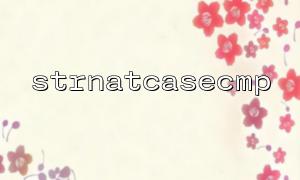When performing image processing in PHP, imageflip and imagerotate functions are commonly used image operation functions. imageflip is used to flip the image, while imagerotate is used to rotate the image. They are very useful in image manipulation, but there are some key considerations that need special attention from developers when using these functions. This article will discuss in detail what to note when using these two functions.
The imageflip function can flip an image and provides several flip options. Its basic syntax is as follows:
imageflip(resource $image, int $mode): bool
$image : Image resource, usually an image loaded through functions such as imagecreatefromjpeg , imagecreatefrommpng, etc.
$mode : Flip mode, defines the direction of flip. Common patterns include:
IMG_FLIP_HORIZONTAL : Flip the image horizontally
IMG_FLIP_VERTICAL : Flip the image vertically
IMG_FLIP_BOTH : Flip the image horizontally and vertically
The following issues should be paid attention to when using:
Make sure the passed image resources are valid. If the passed image is empty or invalid, imageflip will not work and returns false .
Flip mode must be set, and improper selection may cause the image flip effect to not meet expectations.
When processing large images, the flip operation may consume a certain amount of memory, so pay attention to the memory limits of PHP configuration.
The imagerotate function is used to rotate an image, and the rotation angle can be any integer value. The basic syntax is as follows:
imagerotate(resource $image, float $angle, int $bgd_color): resource
$image : Image resource, also an image loaded through functions such as imagecreatefromjpeg .
$angle : The rotation angle is the unit in degrees. Positive values indicate clockwise rotation, and negative values indicate counterclockwise rotation.
$bgd_color : The background color of the image after rotation. If rotation causes transparent areas to appear at the edge of the image, you can set the background color through this parameter.
The following points should be paid attention to when using imagerotate :
The rotation angle should be paid attention to transferring reasonable values. Usually a positive angle indicates a clockwise rotation, while a negative number indicates a counterclockwise rotation. If the angle is incorrect, it may cause the image to rotate inconsistently.
The background color of the image after rotation needs to be specified, especially when transparent background images (such as PNG), if not specified, it may cause the image background to be black or opaque.
imagerotate creates a new image resource, so if the rotated image is large, it may cause memory usage to increase. If the image is large, the memory limit can be adjusted in the PHP configuration.
Imageflip and imagerotate functions have different performances in different image formats:
For JPEG format images, there is usually no transparent background, and there is no need to pay special attention to the background color when operating.
For PNG and GIF format images, transparent backgrounds will be retained, so special attention should be paid to the background color setting when rotating to avoid undesired black backgrounds.
If the image uses true color (such as PNG), more memory is required when rotated, especially when large images.
For large images, both imageflip and imagerotate can consume a lot of memory. When performing these operations, developers should consider the following points:
When working with large images, you may need to increase the memory limit of PHP scripts. A larger memory limit can be set via ini_set('memory_limit', '128M'); or in php.ini .
Destroy image resources in time when using them. Memory can be freed through the imagedestroy() function to avoid memory leakage.
When using imageflip and imagerotate , you may encounter some errors. For example:
Pass invalid image resources.
The background color of the image is not set correctly.
The image is too large, resulting in insufficient memory.
During development, debugging and error handling can be done in the following ways:
Use var_dump($image) to see if the image resource is valid.
After using imagerotate , check whether the return value is false , indicating that the rotation operation has failed.
Output error information through error_log() to help debugging.
Imageflip and imagerotate are often not used alone, and in practical applications, they are usually used with other image processing functions. For example:
Use imagecopy() to merge the rotated or flipped images into other images.
Use imagesavealpha() to save a PNG image with a transparent background.
This makes the image processing process more flexible and efficient.
The imageflip and imagerotate functions are very practical image processing tools in PHP. Mastering their usage skills can help developers efficiently handle various image transformations. During actual use, special attention should be paid to the image format, memory usage, error handling and other issues to ensure the best image processing effect and performance.
If you encounter specific problems when using imageflip or imagerotate functions, please refer to the official PHP documentation or consult relevant resources for more help.















